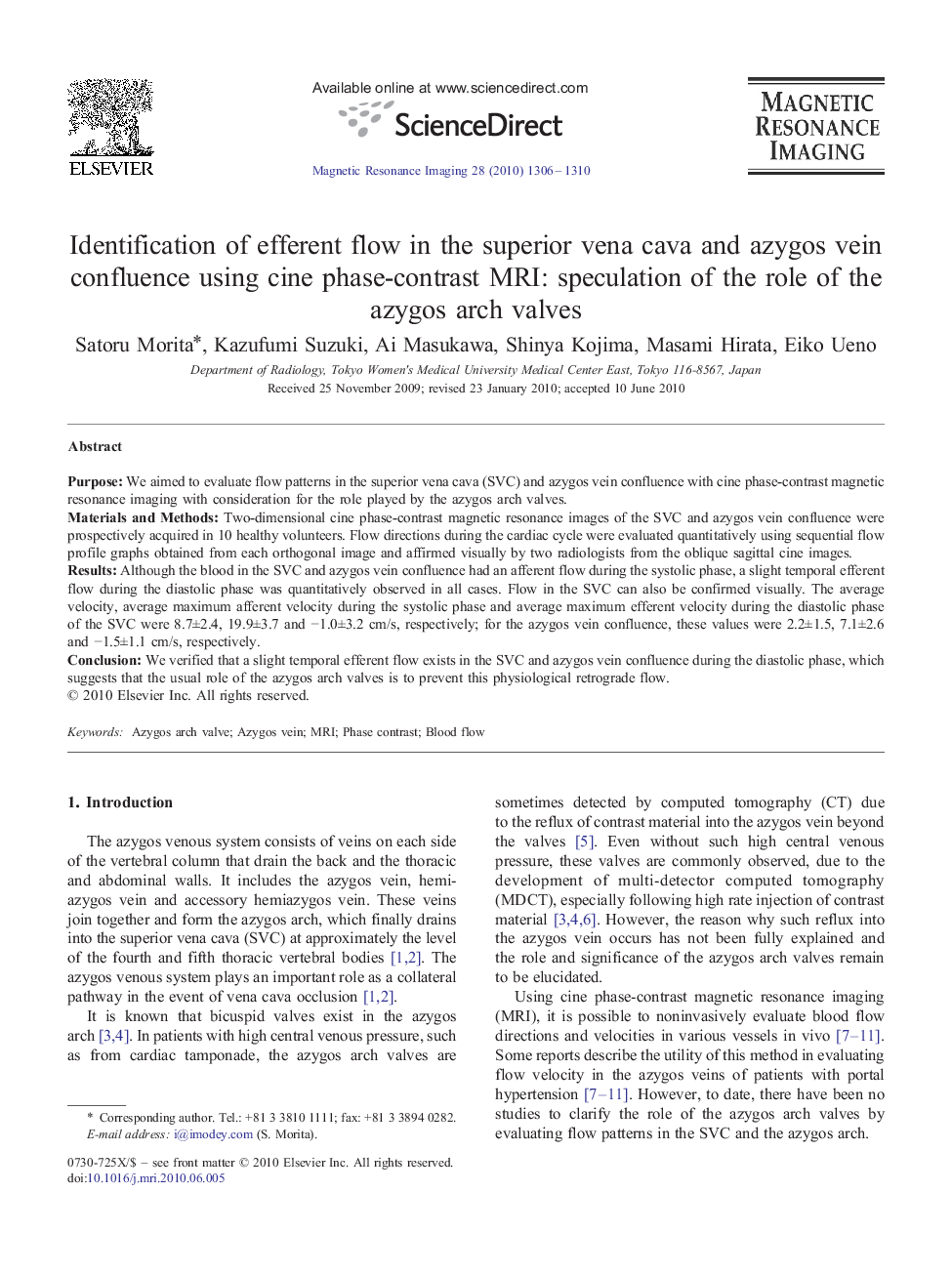| Article ID | Journal | Published Year | Pages | File Type |
|---|---|---|---|---|
| 1806997 | Magnetic Resonance Imaging | 2010 | 5 Pages |
PurposeWe aimed to evaluate flow patterns in the superior vena cava (SVC) and azygos vein confluence with cine phase-contrast magnetic resonance imaging with consideration for the role played by the azygos arch valves.Materials and MethodsTwo-dimensional cine phase-contrast magnetic resonance images of the SVC and azygos vein confluence were prospectively acquired in 10 healthy volunteers. Flow directions during the cardiac cycle were evaluated quantitatively using sequential flow profile graphs obtained from each orthogonal image and affirmed visually by two radiologists from the oblique sagittal cine images.ResultsAlthough the blood in the SVC and azygos vein confluence had an afferent flow during the systolic phase, a slight temporal efferent flow during the diastolic phase was quantitatively observed in all cases. Flow in the SVC can also be confirmed visually. The average velocity, average maximum afferent velocity during the systolic phase and average maximum efferent velocity during the diastolic phase of the SVC were 8.7±2.4, 19.9±3.7 and −1.0±3.2 cm/s, respectively; for the azygos vein confluence, these values were 2.2±1.5, 7.1±2.6 and −1.5±1.1 cm/s, respectively.ConclusionWe verified that a slight temporal efferent flow exists in the SVC and azygos vein confluence during the diastolic phase, which suggests that the usual role of the azygos arch valves is to prevent this physiological retrograde flow.
